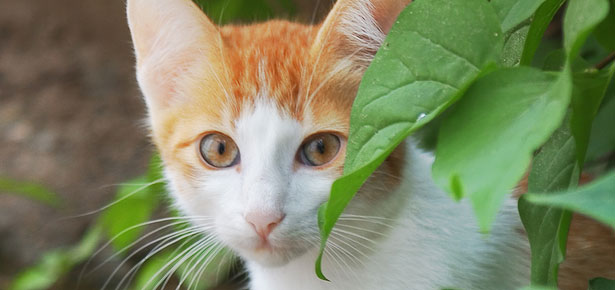

Ways to Help Feral Cats
October 16th is National Feral Cat Day
Feral cats, unlike strays, have been born and raised in the wild or have been abandoned and must revert back to their primitive ways in order to survive. Most of these cats, fearful of humans and too skittish to be handled, often live in groups and take refuge wherever there is available food and shelter. Because of this, they are unfortunately subject to harsh weather conditions, starvation, or diseases and sometimes even eradicated by humans in attempts to deplete the feral cat population. In honor of National Feral Cat day on October 16th, 2014, here is what you can do to help feral cats.
You will be able to tell if you have come in contact with a feral cat rather than a stray by their standoffish and notably quiet demeanor. They will most likely keep their distance from you and scamper off when approached. However, this shouldn’t deter you from trying to help. You can find feral cats in many types of areas, both urban and rural, but are most
Feral cats have a great chance of survival if they live in a group, or colony, maintained by a dedicated caretaker. This means providing regular feeding and proper shelter, as well as spay/neuter services. A popular and effective way to do this is the Trap-Neuter-Return method, or TNR.
This humane method, helping to stabilize, and over time, reduce the population of feral cats, traps the cats to have them spayed or neutered and vaccinated (against rabies), and then returns them to their colony.
“At the time of the spay or neuter, the veterinarian surgically removes the tip of one ear (ear-tipping) as a safe and effective means of marking cats, thus sparing them from unnecessary trappings,” said Dr. Carly Duff, veterinary resident at the Texas A&M College of Veterinary Medicine & Biomedical Sciences.
By stabilizing the population, cats will be exposed to fewer risks of disease and will live healthier lives, with more space and food to themselves.
You may call your local animal shelter for help in trapping a feral cat for TNR. When they do this, you shouldn’t feed the cats for a little over a day, as they must be hungry to enter the trap, which is usually baited with tuna, sardines, salmon, or other luxurious foods that feral cats aren’t accustomed to eating. After they have been vaccinated and spayed or neutered, they are then returned to their colony.
The Aggie Feral Cat Alliance of Texas, or AFCAT, is a program here at Texas A&M University whose main goal is to provide care and long-term management of feral cats on campus. Comprised of students, staff, and faculty from the Texas A&M campus, they also provide educational information on the costs and commitment of responsible pet ownership to help decrease the source of feral cats. If you are interested in joining or want to learn more about them, you can visit their website at http://vetmed.tamu.edu/afcat/.
Remember that although these cats are wild and often untamable, they still need your help to survive. With humane methods such as TNR and the involvement of dedicated caretakers, you can decrease their risk of disease and starvation by helping to stabilize and eventually reduce the population of feral cats.
For semi-feral cats that are being socialized, follow these tips to ensure a happy household and kitty.
Join the newsletter and never miss out on cat content again!
"*" indicates required fields
By clicking the arrow, you agree to our web Terms of Use and Privacy & Cookie Policy. Easy unsubscribe links are provided in every email.










